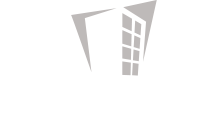ROOFING RESOURCE CENTER

Did you know reflective surfaces can naturally cool properties and they can reduce the effects of urban heat islands?
We did because the systems we use have design features that allow them to be reflective and absorb less heat. Ultimately, making it easier for you to cool your property. But how is this measurable, and why is it important to know this?
In this blog, we’ll discuss what Solar Reflectance Index (SRI) is and share why it’s important.
What is Solar Reflectance Index?
SRI is a measurement calculated with solar reflectance and thermal emittance values and used to determine a roof’s overall surface ability to refuse solar heat. The purpose of this measurement is to identify a surface’s ability to remain cool under the sun. For example, a roof with a high SRI is going to reflect more solar radiation and emit more thermal radiation than a roof with a lower SRI. Here are some other factors, besides roof slope, that effect SRI scores:
- Product Type (Fluid-applied vs. Old Methods)
- Climate Zone
- Building Type
When working with a trusted partner in the commercial roofing industry, they should already know this information. So, if you’re curious about the SRI score of the system being installed, you can always request this information from them. Although, you’ll typically find that fluid-applied systems have higher SRI scores versus old methods.
Why is Solar Reflectance Index important?
SRI is important because it measures the ability of a system to naturally cool a property. This can be especially critical if you’re interested in lowering your energy costs and increasing your energy efficiency. Having a high SRI can also support sustainable goals or initiatives that your company may have, like meeting LEED requirements at your property. For example, if you’re interested in having an SRI that meets LEED requirements, you will need at least an SRI of 29 or higher for a steep slope roof and at least an SRI value of 78 or higher for a low slope roof.
Want to know about how you can boost your property’s reflectivity with our systems?
If you’re interested in learning more about SRI and how you can boost your property’s reflectivity with our fluid-applied systems, we’re here to help!
Simply call us at 937.909.9030 or contact us via email. You can also follow us on LinkedIn and Facebook to learn more about us and the work we do.
Related Articles

Restoring a National Distribution Center in Houston, TX
Our team helped a company with national reach restore the roof on one of their distribution centers in Houston, TX....

Functional, Sustainable, and Economical Solutions
At White Hat Industrial, our focus has been on roof restoration since the beginning. This focus has allowed us to...

How Commercial Roof Restoration Works and Contributes to Sustainable Goals
Commercial roof restoration continues to grow in popularity because of its ability to support sustainability initiatives. These solutions can do...
